- News
- Reviews
- Bikes
- Components
- Bar tape & grips
- Bottom brackets
- Brake & gear cables
- Brake & STI levers
- Brake pads & spares
- Brakes
- Cassettes & freewheels
- Chains
- Chainsets & chainrings
- Derailleurs - front
- Derailleurs - rear
- Forks
- Gear levers & shifters
- Groupsets
- Handlebars & extensions
- Headsets
- Hubs
- Inner tubes
- Pedals
- Quick releases & skewers
- Saddles
- Seatposts
- Stems
- Wheels
- Tyres
- Tubeless valves
- Accessories
- Accessories - misc
- Computer mounts
- Bags
- Bar ends
- Bike bags & cases
- Bottle cages
- Bottles
- Cameras
- Car racks
- Child seats
- Computers
- Glasses
- GPS units
- Helmets
- Lights - front
- Lights - rear
- Lights - sets
- Locks
- Mirrors
- Mudguards
- Racks
- Pumps & CO2 inflators
- Puncture kits
- Reflectives
- Smart watches
- Stands and racks
- Trailers
- Clothing
- Health, fitness and nutrition
- Tools and workshop
- Miscellaneous
- Buyers Guides
- Features
- Forum
- Recommends
- Podcast
 zwift-photo-cycling-05
zwift-photo-cycling-05How to get in to e-racing — the lowdown on online bike races
There have been many changes to the sport of cycle racing over the years, but one of the biggest set to impact its future is eracing, virtual bike races on indoor stationary trainers.
It won’t have escaped your attention that eracing has been getting a lot of publicity of late, most recently with the announcement that the Tour de France and Etape du Tour will be happening online this year, ahead of the planned outdoor race at the end of August
The popularity of eracing is just a natural evolution of the sport reckons Rhys Howell, manager of the Canyon Zcc eracing team. “I think it’s just the natural progression and also the accessibility,” he says. “It’s really no different to logging in and doing a workout - the time constants and ease of setup are the same. So I think that’s why we’ve seen a lot of people at least try it out, that conversion is undoubtedly higher than what you’d see in real life."
“Then for those who regularly race, there’s quite a good community, most of the top racers know each other, and the competitive element is really high. I think Nathan Guerra’s live commentary adds something which you don’t normally get as an amateur either. In the end, eracing is just a great workout and after an hour you’re done and in the shower.”
But can virtual racing really compare to real life road racing?
Surely it can’t be as tough as actually pinning a number to your jersey and trying to compete with a group of other cyclists of similar abilities, all trying to stay near the front, get in a breakaway and lining up for the sprint finish, can it?
Making direct comparisons isn’t so straightforward. “In some ways, it is harder and some ways easier," says Rhys Howell. "Compared to racing out on the road, you’re going to be doing a much steadier effort at FTP/FTP+ with fewer surges,” he says.
“There will be no freewheeling, no sprinting out of corners, and the drafting experience won’t be as noticeable. For some people that will be easier and for others harder, as there is really no opportunity to recover, ever. If you lose the draft of the group as well then it’s almost impossible to chase back on and your race is over. Having done both, I can tell you that both are hard in their own way. They are just different. I think most people presume there are no tactics required to be good at Zwift racing, but that’s not true. If you don’t have enough nous then it doesn’t matter how big your engine is.”
Tactics are a key part of real cycle racing. A race isn’t necessarily won by the strongest, but by the smartest. Careful positioning, conserving energy, timing an attack or sprint to perfection, working with others, there are a lot of tactical lessons that you really only pick up through lots of racing, and then some people are good at it and others just aren’t.
Tactics are different in eracing but Ian Bibby, the winner of the first KISS Super League, says power-ups are an important consideration. “One thing we did talk about was the importance of having a power-up at the end," he says. "If you didn’t have one, then you weren’t going to win so it was really important to pre-plan that,” he says.
The pace just goes up and up as every rider hits the front," adds Ian Bibby. “You don’t have much control of staying on the wheel. If you go to the front the pace goes up each time there is a new rider coming through and it goes harder and harder. Rather than getting away, those gaps open behind and a guy 10 back will struggle.”
One thing is clear, getting a good warm-up is vital with eracing as unlike real life road races, the starts can be explosive. “Zwift races start incredibly fast - you will be in the red for the first few minutes, but you really need to hold a position in the front at the start as the pace will slow," says Zwift’s Chris Snook. "Top tip - if you enter your event early and warm up in the start pen, you will start further up in the bunch - late joiners go to the back."
Currently, eracing just involves turning the pedals but might a future version move it even closer to real life racing, with more noticeable weather and wind effects and control over your direction on the virtual road? “I can also see many ways in which eracing will evolve to make it more challenging and closer to what you experience in racing on the road - that includes steering, crashing, winds and different in-game physics. This is really just the beginning,” opines Rhys Howell.
Zwift is also working to ensure that eracing is fair, fun and free of cheating, which will certainly be a big concern for anyone looking to get into eracing, and to tackle this it’s currently writing a code of conduct for the fledgeling sport.
“We have been building an extensive eSports rule book which will come into force by the time we officially launch our full eSports offering,” explains Zwift’s Chris Snook. “The book covers all areas of the sport, from a code of conduct to cheating. We firmly believe in fair competition - not only is it essential for us to be a credible sport, but it's also important to enable people to enjoy the racing on Zwift.
"Zwift has also now taken on ZADA - Zwift Accuracy and Data Analysis. ZADA continues to be run by the original third-party founders however, it now has the backing of Zwift. ZADA is now better supported and better equipped than ever before.”
Ensuring competitors play by the rule book is one thing, but ensuring hardware and equipment parity is another hurdle that eracing needs to tackle. “Lastly, hardware is an important part of this conversation, and we are working with partners to deliver equipment that is suited to racing,” adds Chris Snook. “Ultimately, I see us getting to a point where we have certified trainers and power meters for eRacing - just as the UCI has approved frames for road racing.”
How big is eracing going to get?
With all that said, how big could eracing get in the future? That’s a really difficult question to answer, we’ve even dusted down the old road.cc crystal ball but it’s not giving us a decent answer, but as with the rise of smart trainers and indoor cycling in general, racing is just a natural extension for those hooked on virtual bike riding. It can only get more popular.
But there are still hurdles to ensure easy accessibility, the high cost of all the kit you need being the most pertinent one, but Rhys Howell thinks it is only set to grow and actually removes a barrier that exists with conventional real-life road racing to make eracing more accessible. “Personally, I think it could be huge. I refer to it as ‘physical esports’ and I think we’ll see a lot more growth in this area, not just limited to cycling,” he says. “At the end of the day, it will really depend on whether there is an audience there and whether the money will come in."
Whether there is any money in eracing is another question. Could future cyclists stand to make a living riding virtual bike races, just as other esports allow? “Early signs from what I’ve seen with live events is very promising though," adds Rhys Howell. "The business models in professional cycling needs serious innovation and I think eRacing could definitely help generate revenue so that teams become more sustainable and stable. Furthermore, as we’ve shown with the Canyon ZCC, it’s also possible for athletes from outside of the pro peloton to compete at the highest level. So there is a barrier to entry that is also stripped away - that makes a big difference.”
Removing one barrier to accessibility is that Zwift currently allows children under 16 to join for free, part of its desire to appeal to younger audiences as a potential gateway to outdoor cycling. Zwift says it obviously wants eracing to be sustainable and for a sponsorship and business model that allows riders and teams a slice of the broadcasting revenue, and build long-term fan bases.
“The other commonly spoken about the problem facing professional cycling is the question over sustainability," says Zwift's Chris Snook. "Professional cycling relies solely on sponsorship - teams set their budgets yearly based on the sponsorship secured for the coming season. Throughout the season, this budget is spent on rider and staff salaries, transport to races etc. There is very little, if anything, left at the end of the season - aside from things like team buses, they own very few physical assets even. It's because of this, we often see teams folding, teams struggling to find title sponsors big enough to secure the required funding, riders frequently moving teams, and teams changing names, title sponsors etc - even mid-season (Ineos a prime example).
"It's therefore, very difficult to build a fan base for a team. In other sports - take Manchester United as an example - they have the same stadium, retain much of the same squad year on year, keep the same kit design etc. It's easy to build a long term fan base around this proposition, and as a result, sell tickets to live events and sell replica kit - all the things that help make the team sustainable.
“With esports, we would like to create this sort of sustainable business model, where competing teams are able to share in the revenue of broadcasting rights, can sell tickets to live arena-style events, and build long term fan bases within the world of eRacing. We've already seen Canyon launch the first professional esports cycling team, Canyon ZCC, and I would expect to see more follow in the coming years. Of course, this will be a discipline of cycling relevant for existing cycling professionals (as we have already seen) but I can see a new breed of specialists coming into the sport as well."
Zwift would seem to have the market wrapped up to itself and it’s clearly trying to position itself as the standard platform of choice and has big plans to embrace eracing to its full extent. It revealed that the KISS Super League run earlier this year is part of a demonstration year, its full offering, whatever that looks like, is rolling out in 2020.
“The beauty with dealing with a virtual platform is the sky is limit,” explains Zwift’s Chris Snook when asked how big eracing could get. “We have the ability to do things that are impossible in the real world - PowerUps are just the beginning. If you take a look at how other sports are experimenting with fan engagement, there is a lot of potential - Formula E, for example, offers fans the ability to give drivers a power boost. Wouldn't that be cool for cycling?
Just as watching computer games on YouTube, Twitch and other networks have become massively popular in the last decade, so too could eracing be another form of cycle sport to watch alongside conventional television coverage of real-life races.
The British eracing championship was broadcast live and while it divided opinion and clearly the notion of watching virtual cyclists compete around a virtual world is, we saw comments from people saying it was actually thrilling and enjoyable to watch. So it’s perhaps not a huge leap of the imagination to see eracing being scheduled on regular television schedules alongside regular cycle racing.
And unlike the comparison of football to Fifa being nothing like real football, eracing has the potential to give talented cyclists a shot at a career as a professional cyclist, as the Zwift Academy has been doing for the past couple of years, helping to identify talent through eracing performances. There are parallels with the GT Academy in the motor racing world which gives gamers the chance to go from virtual to real life motor racing, and which in 2013 had a claimed global audience of 100 million people.
But rather than be a direct rival to real life racing, eracing can exist alongside the many disciplines of cycle racing that currently exist, from road racing, track racing, time trialling, hill climbing, speedway, BMX, mountain biking (XC, DH, marathon and enduro) and complement, rather than compete with more established cycle sport disciplines.
“We see eRacing as being another discipline of cycling, and this is exactly how British Cycling treated it for the British Cycling Zwift eRacing National Championships. Whether points are married between eRacing and road racing, in the same way they are for road and track would be up to the federations themselves. Personally though, I don't see this happening - it is a different discipline of cycling,” says Zwift’s Chris Snook.
So it seems clear that eracing, whether you like it or not, is here to stay.
If you like the sound of eracing, what do you need to do to get involved?
You’ll need some hardware and software to get into eracing. For the latter, the main choice at the moment is Zwift. It costs £12.99 and you can try a 7-day free trial to see what it’s all about before committing. We’d like to see more rivals and alternatives to Zwift for the future of eracing to really blossom, but for now Zwift is really leading the charge and clearly investing heavily to ensure it has a big stake in whatever future eracing has.
Then you’ll need a bike, trainer and a computer of some sort to run Zwift, and here you have several options. If you have a bike, you can purchase a trainer. You can use any trainer if you have a power meter on your bike will do, but if you don’t have a power meter you need a speed sensor on your bike and use Zwift’s zPower to provide virtual power readings. You can get something like a CycleOps Mag trainer for £150 and a speed/cadence sensor for another £20, so it needn’t cost a fortune to get started.
At the other end of the scale, if you’re really wanting to get into eracing seriously, or are upgrading from a cheaper setup, are smart trainers like the £999 Wahoo Kickr or £1,200 Tacx Neo 2. With these direct-mount trainers you bike mounts directly to the trainer, with the rear wheel removed, whilst integrated power meters help to simulate the gradients of the virtual Zwift roads.
If you don’t have a bike, you could look at a Wattbike or similar all-in-one solution. It’s perfectly designed for indoor cycling with power accuracy and a wide range of adjustability.
Here’s our complete guide to getting started on Zwift with all the hardware advice you need.
Once you’ve got everything up and running, you just need to join a race, using the Zwift calendar via its website or companion app, makes it really easy. The races are split into categories just like real life racing, but rather than having to earn points to progress to the next level, like with British Cycling sanctioned road races, in Zwift it’s all based on your FTP, your maximum sustainable power output. There’s nothing stopping you from going right in at the deep end with a category A race but it will be hard!
See you on the start line!
David worked on the road.cc tech team from 2012-2020. Previously he was editor of Bikemagic.com and before that staff writer at RCUK. He's a seasoned cyclist of all disciplines, from road to mountain biking, touring to cyclo-cross, he only wishes he had time to ride them all. He's mildly competitive, though he'll never admit it, and is a frequent road racer but is too lazy to do really well. He currently resides in the Cotswolds, and you can now find him over on his own YouTube channel David Arthur - Just Ride Bikes.
Latest Comments
- David9694 12 min 5 sec ago
Drivers react to Brinkworth Road Lidl works causing delays...
- Rendel Harris 24 min 7 sec ago
+1 for diesel; is the corner on a bus route? They're the worst culprits though there are plenty of others. Often impossible to see, one of my...
- philhubbard 1 hour 23 min ago
Absolutely not. I work for a cycling company and regularly travel to Europe with a bike, I always get stopped to check if I had products to sell in...
- David9694 1 hour 52 min ago
Woman arrested after car flips onto roof in Oxford crash...
- eburtthebike 3 hours 1 min ago
I am, but not that much!
- Rendel Harris 3 hours 3 min ago
Nobody "deserves" to be spat on, be they riders, fans or anyone else. Saying that riders shouldn't spit on spectators isn't demanding they act like...
- Another_MAMIL 14 hours 1 min ago
Q36.5 Gregarius Essential Bib Knickers fit the bill: 3/4 length bib tights for warm weather.
- Rendel Harris 14 hours 11 min ago
Jolly good. Only it hasn't been and it is still a public bridleway. Feel free to look it up.
- jaymack 15 hours 2 min ago
"...it feels more like a £100+ jersey". It's almost as if cycling apparel is over priced.
- mike the bike 16 hours 14 min ago
I've had a few Lezyne bits and bobs over the years and while it's true I've never bothered to return anything under warranty, I've had a couple of...
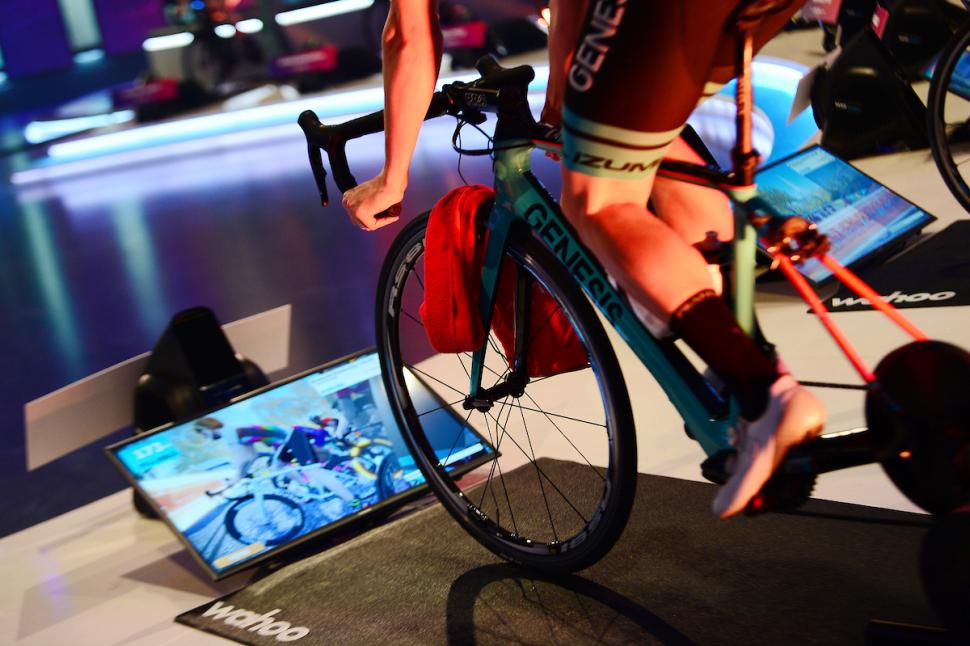

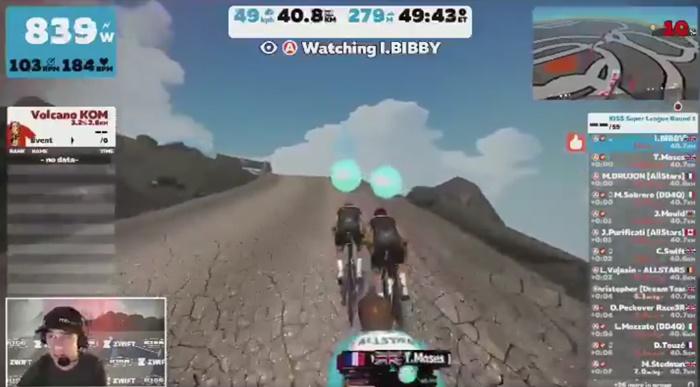


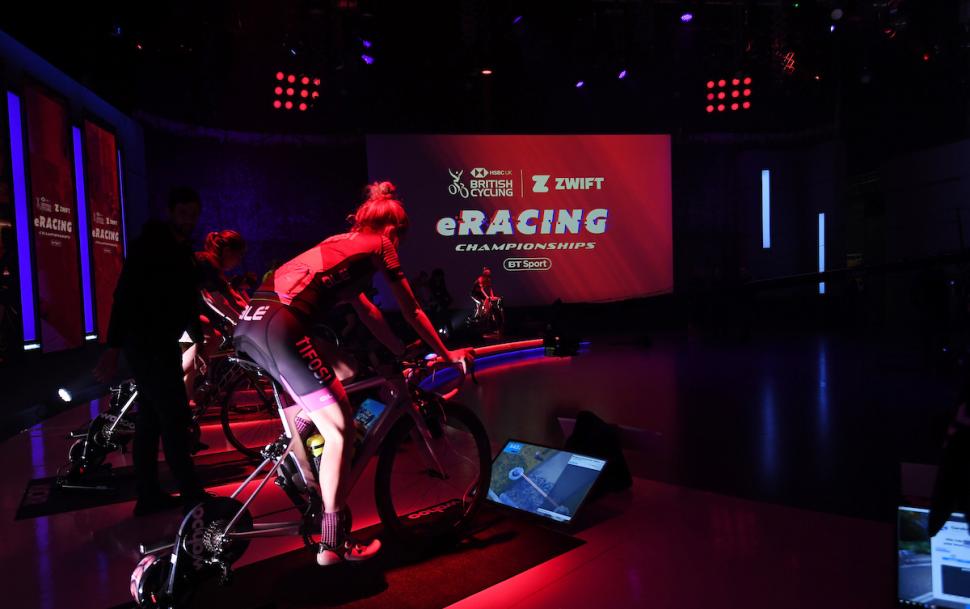
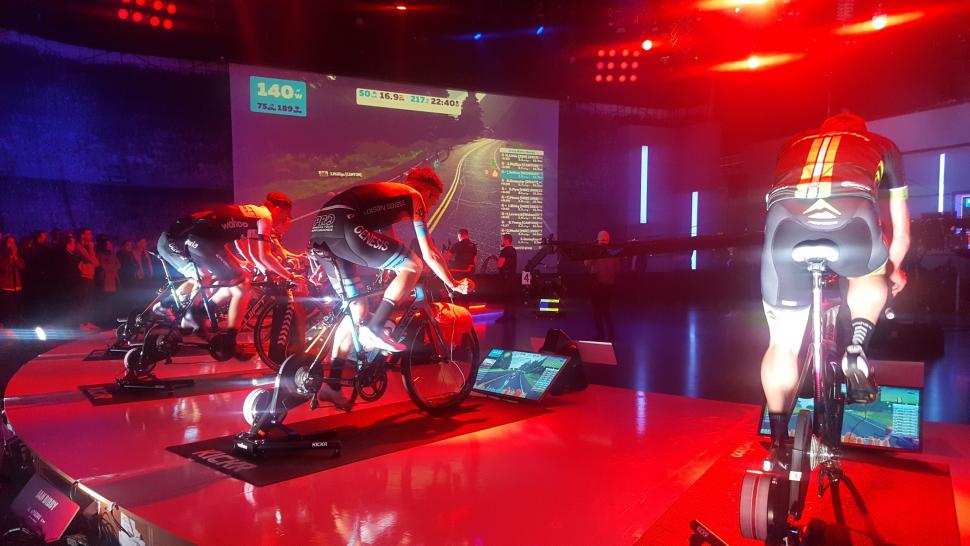

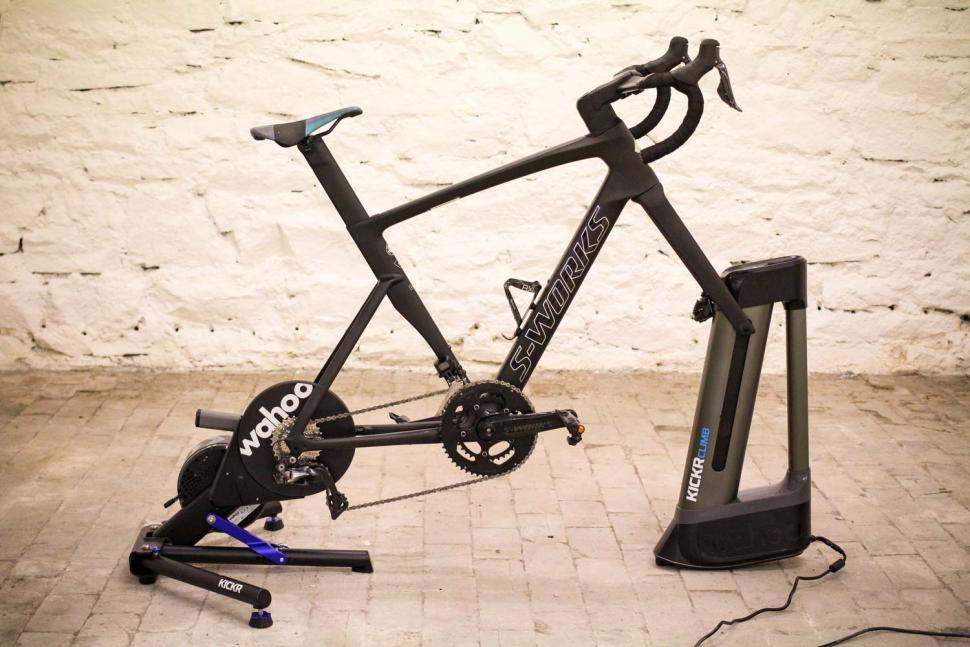
Add new comment
2 comments
The question is not how to get in - but how to get out!
I think to get this to work well for ordinary Joes like me (I do a couple of cat c zwift races per week) they need to sort out the sandbagging. Lower cat races are full of riders who should be in a higher category. Hopefully the new "cone of shame" they are trialling that highlights these riders and throttles their power will help. Would be even better if Zwift just absorbed the Zwiftpower site into its operating system.